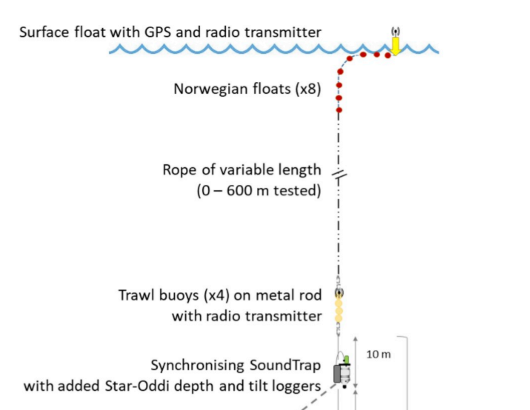Strumming is low frequency noise created by the vibration of a cable (see this question on how to identify strumming). According to The Practical Guide for Underwater Noise Measurement, strum can be mitigated through ‘mechanical fairings’ or by ‘decoupling the hydrophones from suspension cables using compliant couplings (elastic rope)’.
What are specific methods used to mitigate cable strum in underwater recordings using seafloor or drifting recorders (not towed)? What materials were used? If they were non-conventional materials, how were they acquired? How and where were they attached? Are there methods that were found to be more successful than others?
Pictures and details are encouraged!
